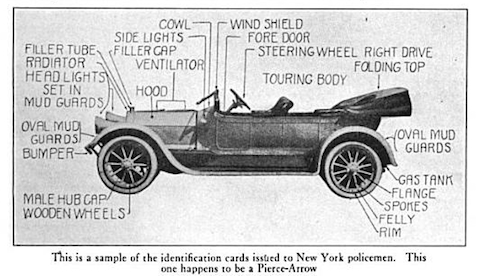
I’m a huge believer in the notion that the good ol’ days were not quite as halcyon as they’re cracked up to be. That anti-nostalgia truism becomes especially clear when one examines crime data from bygone eras; Americans, it turns out, have been treating one another quite unkindly for generations. I made that point in a post last September regarding Jacksonville’s once-astronomical homicide rate, which far exceeded that of Chicago at its early 1970s worst. Now I have another piece of evidence, in the form of automobile theft rates from Wilson Administration.
Take the case of Detroit, for example, which had a 1920 population roughly equivalent to what the decaying city claims today. There were roughly 3,360 automobile thefts in the Motor City in 1920, versus a tick over 13,000 in 2009. But you also have to factor in car ownership rates; only 3 percent of Americans owned autos in 1920. It is thus reasonable to surmise that a significant percentage of car owners back then had to suffer through at least one theft per year, despite the advent of various gadgets designed to frustrate thieves.
I initially thought that the majority of these bygone thefts were the work of joy-riders, who simply wanted to experience the magic of the internal combustion engine. But this account from Omaha’s chief of police offers a different take:
I have found among the auto thieves who have been arrested here, many old time “Yegg” men, who have given up the blowing of safes and robbing of country stores and taken to the stealing of automobiles, as they figure they take less chances and make more money in the game when they have a “fence” in some other city who will handle stolen cars for them.
Then there are a lot of crooked chauffeurs, who, when they want to leave the city, generally figure on taking an auto with them. They usually find a sale for the car, as there is always someone in every city trying to buy something for half its value.
Not helping matters from a law-enforcement standpoint: the fact that there were just a handful of body styles, and thus no easy way to identify stolen vehicles.
Auto theft did decline precipitously during the 1920s, in part because of technological innovations, but also due to greater cooperation between police departments. It’s easy to forget that America used to be far more provincial; the regional differences we notice today pale in comparison to the real animosity that formerly existed between states and cities. I wonder how much of that was due to the federal government muscling in on cases in which stolen goods were transported across state lines; if Hollywood has taught me anything, it’s that city cops loathe nothing more than getting usurped by the Feds.


Like gas stations in rural Texas after 10 pm, comments are closed.